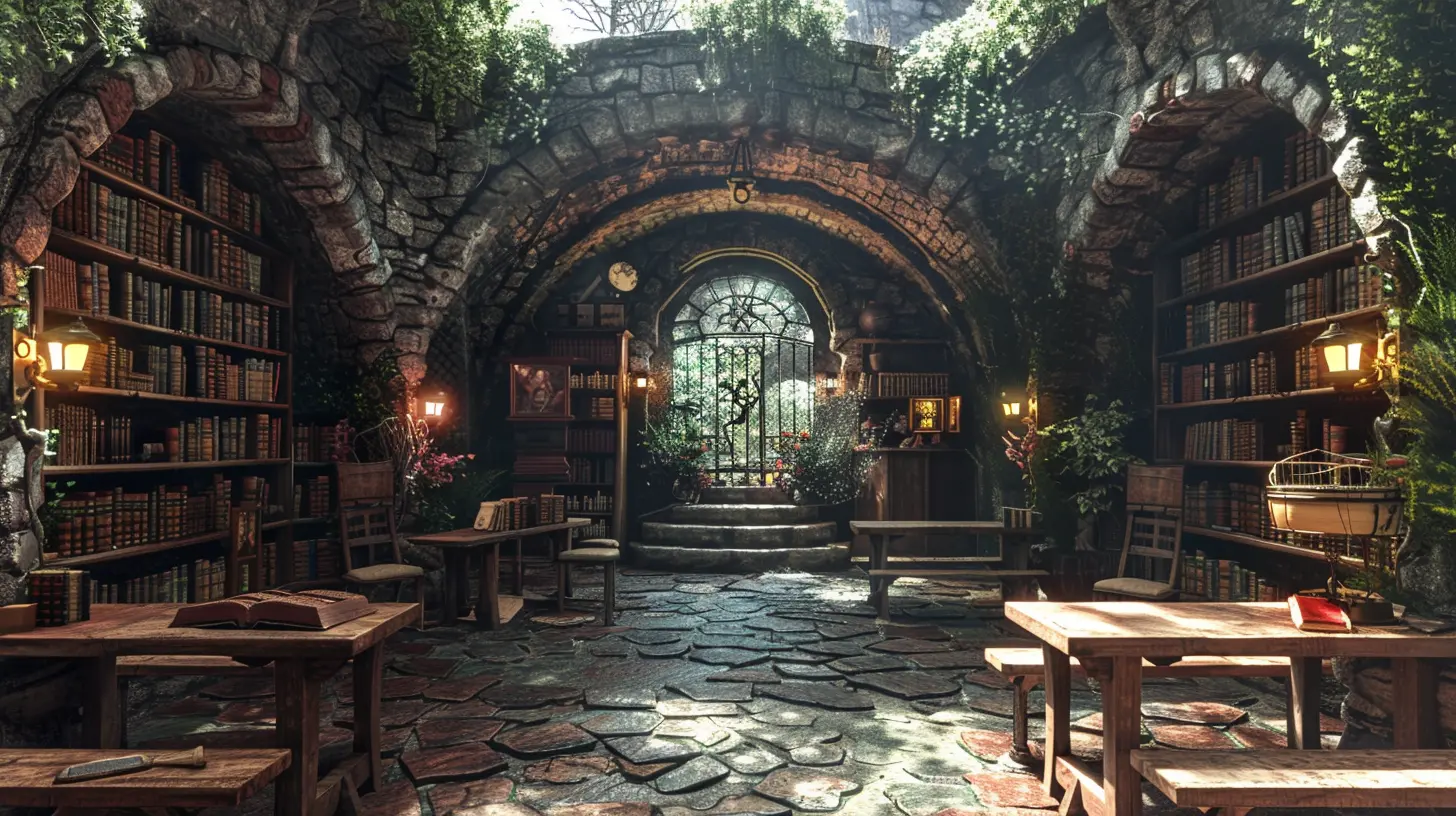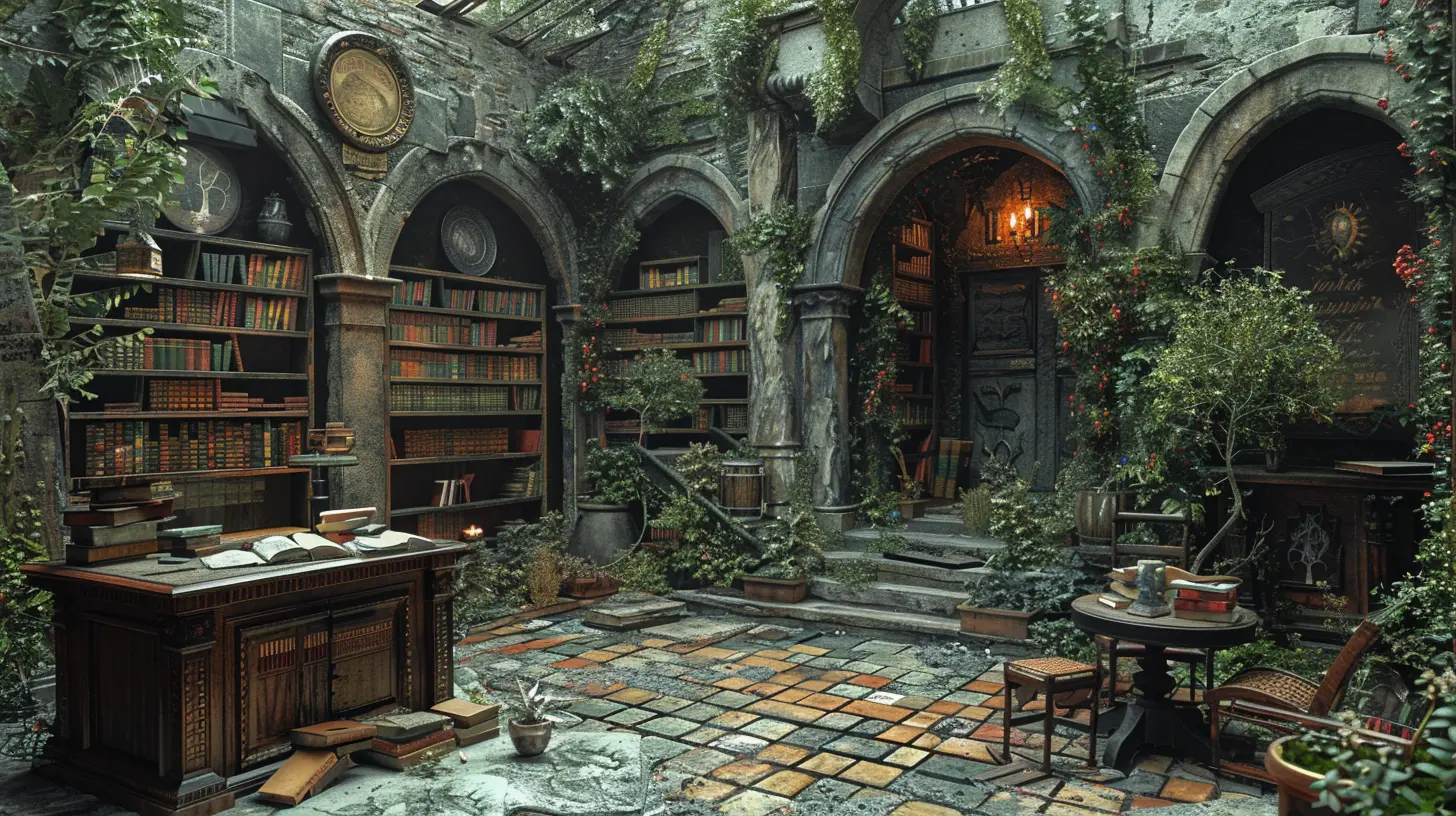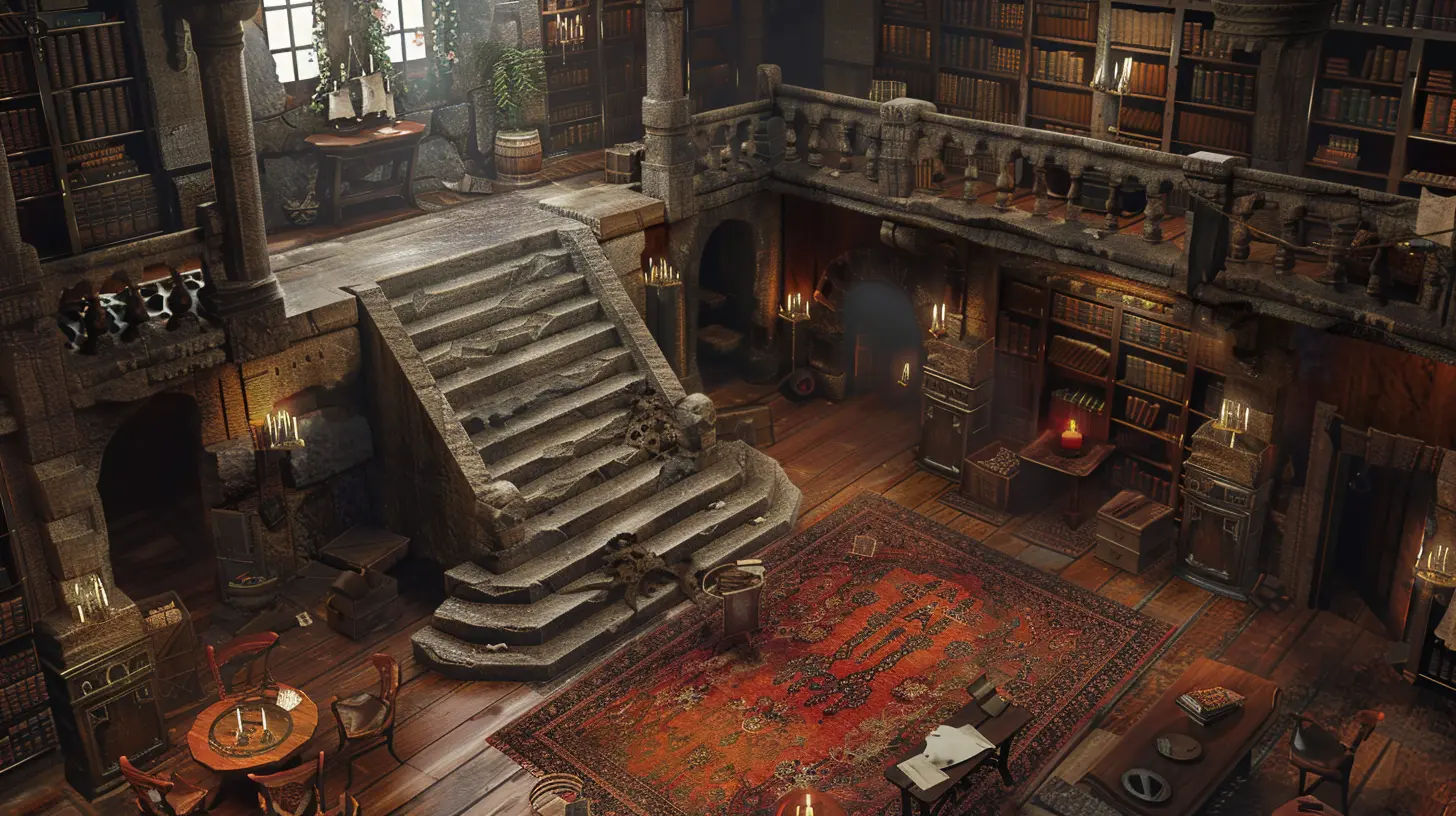The Art of Storytelling Through Game Environments
23 October 2025
Picture this: You're wandering through a quiet, abandoned village in a game. Wind howls through broken windows, furniture lies scattered like ghosts of a once-happy home, and vines have crept through cracks in the walls. No one says a word. There’s no narrator, no dialogue—yet somehow, you understand everything about what happened here.
That's the power of storytelling through game environments.
Let’s dive deep into how video game worlds are more than pixels and polygons—they're canvases painted with emotion, memory, and meaning.
What Is Environmental Storytelling Anyway?
Before we jump into the details, let’s clarify something super important. What do we mean when we say “environmental storytelling”?In simple terms, it’s telling a story without words—through the setting itself. It’s when a room, a street corner, or a battlefield whispers a tale through its layout, lighting, objects, textures, and even sound. Game environments become narrative tools, not just backdrops.
Think of it like walking into a friend’s apartment and knowing they just had a bad breakup—there's an overturned pizza box, an empty wine bottle, and Coldplay playing softly in the background. You get the picture without anyone saying a word.
Why Game Worlds Speak Louder Than Dialogue
Sure, cutscenes and dialogues are great, but they’re not the only way to move a player emotionally. In fact, sometimes less is more.When a game environment tells its own story, the player becomes a detective. You start to piece things together on your own. It creates a sense of discovery, a personal connection. It’s not just being told a tale—you’re living it.
Let’s be honest—do you remember more vividly the monologue from that side character… or the time you stepped into a room full of blood-soaked dolls and instantly knew something had gone horribly wrong?
Exactly.
Building Worlds That Feel Alive
The trick to great environmental storytelling lies in the details—the kind that makes a space feel lived-in or haunted or full of hope. These aren’t just decorative elements. They are the story.1. Objects Tell Tales
A single teddy bear in a corner. A coffee mug still warm. A journal entry lost under a bed. Small objects in the right place can speak volumes. Games like The Last of Us and Gone Home practically master this art.You’re not just playing through levels—you’re stepping into someone’s world. And that’s powerful.
2. Architecture as Narrative
The way a space is built can reflect tone and history. Tight corridors create tension. Vast open fields evoke freedom or loneliness. Collapsed buildings speak of past violence or decay. Some games use vertical space to challenge you emotionally—ascending a tower might symbolize growth or hope, while descending into the dark represents fear or the unknown (I’m looking at you, Dark Souls).Game designers become architects of emotion.
3. Lighting and Color Are Emotional Tools
Lighting can make or break a scene. Warm light might feel cozy, while cold blue lighting gives off an eerie vibe. Flickering lights hint at danger. Darkness hides secrets. Color can trigger emotional response faster than any dialogue ever could.Remember the red skies of Bloodborne? They don’t just look cool—they scream dread.
Case Studies: Games That Nail It
Let’s talk examples—games that have absolutely crushed the art of storytelling through environment.Bioshock – Rapture’s Rusty Voice
The underwater city of Rapture isn’t just a cool idea. It’s a fallen dream, and everywhere you look, the walls whisper its downfall. You see propaganda posters tearing at the edges, old music crackling from vintage radios, and broken statues of once-proud ideals. No exposition needed—you feel what Rapture used to be… and what it became.Inside – Silence as a Storyteller
Playdead’s Inside has no dialogue at all. Not. One. Word. And yet, the atmosphere is thick with tension, mystery, and layers of meaning. Through subtle environmental shifts—like people moving in sync, eerie labs, and strange machinery—the game tells a story that sticks with you long after the credits roll.Red Dead Redemption 2 – Living, Breathing History
Every cabin, alley, and town in Red Dead Redemption 2 tells its own story. You might stumble upon a wrecked wagon, a half-buried skeleton, or an abandoned church. There’s always a story behind it, and it’s all up to you to interpret it. That’s how the West felt alive—it wasn’t just a setting, it was a character.The Player Becomes the Author
Here’s something cool: When games use environmental storytelling well, players take on a new role. You're not just following a script—you’re writing it with every footstep.Players create emotional bridges through interpretation. What one player sees as a symbol of hope, another might see as tragedy. That subjectivity breathes life into the story in a way traditional mediums can’t.
In movies or books, the author tells you the story. In games? You find it.
Why This Matters for Game Developers
If you’re a developer (or dreaming of being one), never underestimate your environment’s narrative muscle. You don't need a massive budget or endless cutscenes to move players. Thoughtful level design, creative object placement, and subtle environmental clues can create unforgettable moments.Ask yourself:
- What does this space say about the world?
- What emotions do I want the player to feel here?
- Can this room tell a story all by itself?
If the answer is yes, you’re on the right track.
Sound Matters Too (Seriously)
You can’t talk about game environments without mentioning sound.Ambient sounds—creaking floorboards, distant howls, dripping water—can create layers of atmosphere. They give voice to spaces where no one lives anymore, or where danger is lurking just around the next corner.
Sound is like seasoning to a dish—leave it out or get it wrong, and the whole thing feels bland.
Dynamic Environments: Telling Stories Through Change
Sometimes the story isn’t just in what’s there—it’s in what changes.Games like The Legend of Zelda: Breath of the Wild and Elden Ring let the world evolve as the player progresses. A once-safe town might fall to ruin. A sunny landscape may turn to ash. These changes tell a story of cause and consequence.
Player actions shape the environment, and the environment responds in kind. It’s storytelling through transformation.
Minimalism Can Be Powerful Too
You don’t always need grand castles or sprawling cities to tell a great story. Games like Journey and Firewatch use minimalist settings to evoke deep emotion. A solitary tower in the desert. A quiet lookout over a forest at sunset. These visuals leave space for the player's imagination to fill in the blanks.Sometimes the silence is the story.
Environmental Storytelling in Indie Games
Let’s show love to indie games too, because they often punch way above their weight in this area.Games like Limbo, Outer Wilds, Oxenfree, and What Remains of Edith Finch use tight budgets and smart design choices to wrap players in atmospheric environments that speak volumes.
Without the pressure of big studio expectations, indie devs take more risks—and often deliver more memorable narratives.
Tips for Players: How to Read a Game’s Environment
So how can you, as a player, get more out of these storytelling moments?1. Slow down. Don’t rush through environments. Take the time to look around.
2. Look for patterns. Is that blood trail leading somewhere? Why are there dozens of empty bottles under that desk?
3. Use your ears. Listen for cues like background music, echoes, or silence.
4. Think like a detective. Ask yourself, “What happened here?”
Trust me, once you start noticing, it’s hard to stop. Environments aren’t just scenery—they’re teachers, hint-givers, and storytellers.
Wrapping It Up: Why This Matters
At the end of the day, storytelling through game environments is about creating a deeper connection between the player and the world. It invites us to feel the game, not just play it. It turns exploration into emotion. And it makes every corner, every shadow, every speck of dust feel like part of a greater narrative.Game developers wield brushes not of paint, but of light, space, and silence. And when used well, game environments become more than code—they become poetry.
So next time you boot up your favorite game, take a moment. Look around. Listen. The world has something to say.
Are you ready to hear it?
all images in this post were generated using AI tools
Category:
World BuildingAuthor:

Emery Larsen
Discussion
rate this article
1 comments
Mary Phillips
This article brilliantly highlights how game environments transcend mere visuals, becoming immersive narratives that engage players emotionally. By intertwining lore, design, and atmosphere, developers create a profound connection, elevating gameplay into a meaningful experience.
October 24, 2025 at 3:17 AM

Emery Larsen
Thank you! I'm glad you found the article resonates with how game environments enhance storytelling and foster emotional connections.


